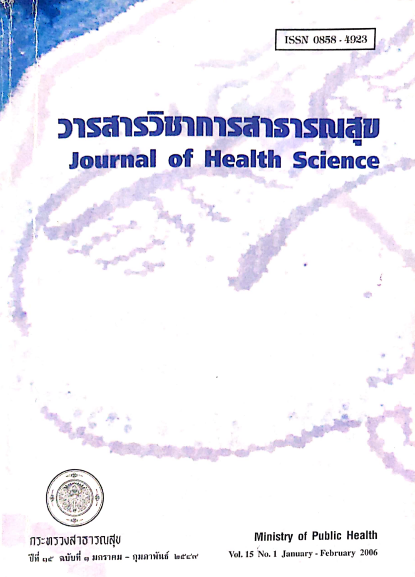Research Series of Thai Health Care Financing : Part 2 for National Health Security Fund
Keywords:
financing sources, UC Fund, National Health Security Act, earmarked excise tax for healthAbstract
At present, the Universal Health Care Coverage in Thailand is fully financed by government general budget. According to National Health Security Act B.E.2545, Article 39. the National Health Security Fund can be generated from 8 sources of finance. This study was conducted during January - March 2004 and its aim was to analyze the advantage and limitation of eight sources of finance for UC according to Article 39 of the National Health Security Act B.E.2545. This study appied two methods, the brainstorming of research team and self administered questionnaire survey of 20 key informants in a one-day workshop. The result from brainstorming of researchers indicated that contributions by local government budget, co-payment by patients and contributions by beneficiaries had potential to be financial sources for UC with some limitation of each source
The result from the workshop of 20 key informants revealed that political feasibility was the most important domain to decide on sources of finance. Other subsequent important domains were sustainability, equity, programmatic feasibility, and social acceptance was the least important. Based on weighted score, the key informants had preference on additional excise taxes from tobacco, alcohol and beer which earmarked to the Fund, this was because it got high scores on political feasibility, social acceptance, sustainability and programmatic feasibility. On the other hand, contributions by beneficiaries were the least feasible source and it appeared to be socially unacceptable and administrative infeasible. Increases in the value added tax were deemed politically infeasible and was the worst in term of inequity.
Questionnaires used in the workshop were constructed by researchers, based on thorous understanding of financing Thai health system. All key informants were fully informed in the workshop in order to have the same understanding. This lead to limited numbers of key informants. However, these key informants were health experts coming from sever experts coming from several institutions both academic and program implementing agencies. This study contributed new knowledge of health care financing in Thailand. Moreover, it provided a fundamental information for the analysis financing of the UC scheme.
Downloads
Downloads
Published
How to Cite
Issue
Section
License
Copyright (c) 2019 Journal of Health Science

This work is licensed under a Creative Commons Attribution-NonCommercial-NoDerivatives 4.0 International License.







